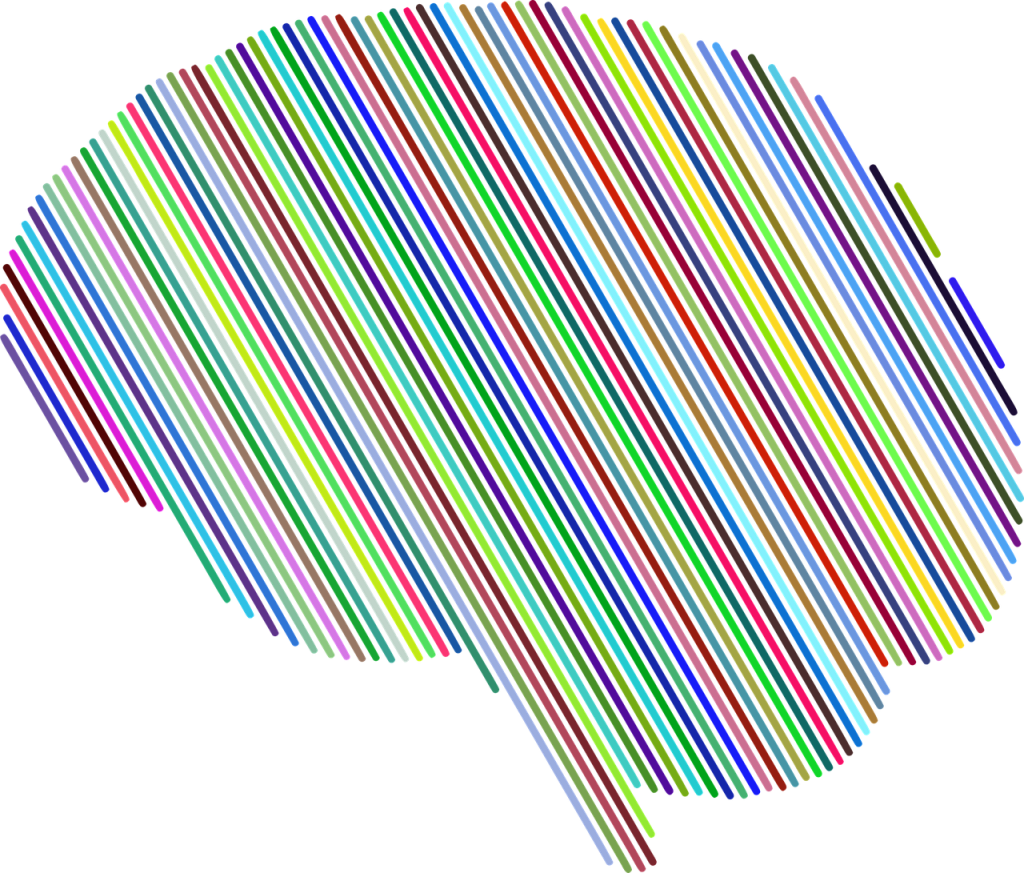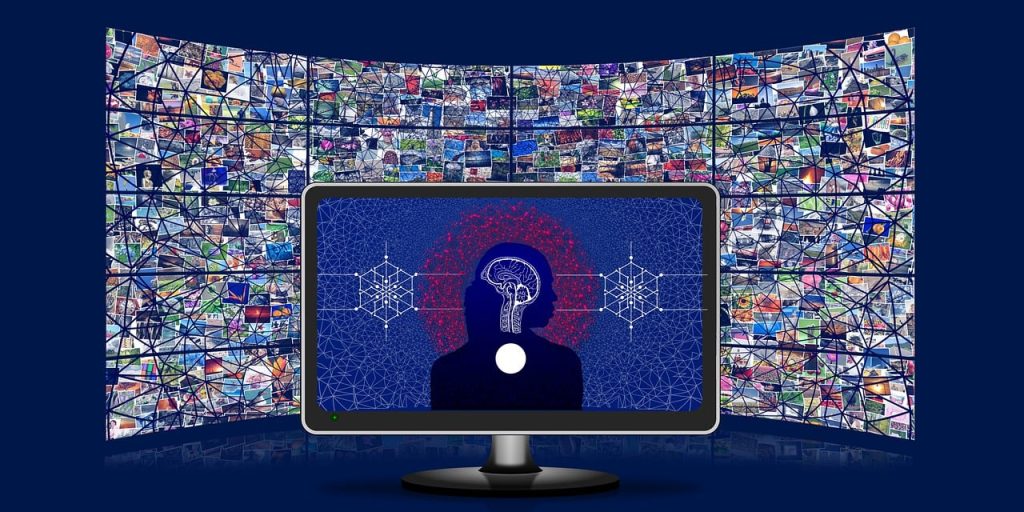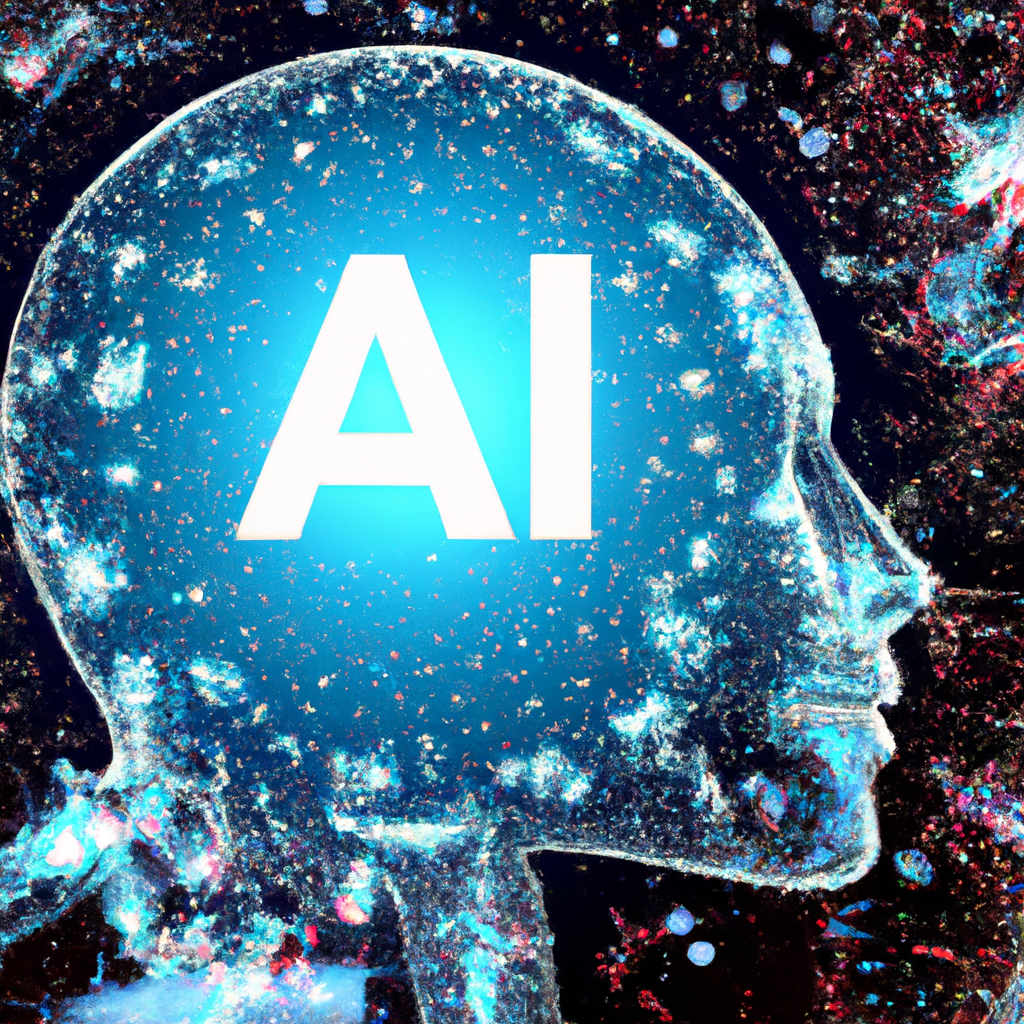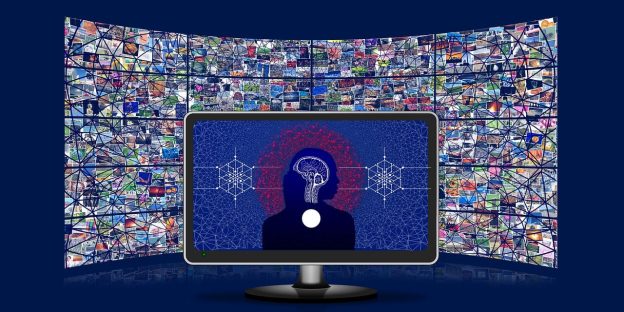So you’ve heard about artificial intelligence (AI) and you’re curious to know about its different types. Well, in this article, we’re going to break it down for you and discuss the three main types of AI. Whether you’re a tech enthusiast or just someone intrigued by the advancements in this field, stay tuned as we explore the world of AI and unravel the mysteries behind its various forms. Get ready to have your mind blown!

This image is property of pixabay.com.
Narrow AI
Definition
Narrow AI, also known as weak AI or specific AI, refers to AI systems that are designed to perform a specific task or a set of specific tasks with a high level of accuracy. Unlike general AI or superintelligent AI, narrow AI does not possess the ability to understand or perform tasks outside of its specific domain. It focuses on addressing a particular problem or completing a specific task by analyzing data and providing intelligent solutions.
Examples
Examples of narrow AI can be found in various real-world applications such as voice assistants, recommendation systems, spam filters, and facial recognition software. Voice assistants like Amazon’s Alexa or Apple’s Siri use natural language processing techniques to understand and respond to user queries, providing information or performing tasks as requested. Recommendation systems employed by platforms like Netflix or Spotify use algorithms to analyze user preferences and behavior, suggesting personalized content. Facial recognition software used in surveillance systems can identify individuals from images or video footage.
Limitations
The limitations of narrow AI lie in its inability to go beyond its specific domain. These AI systems lack the capability to generalize knowledge or adapt to new tasks without significant modifications or retraining. They heavily rely on data availability and may struggle when faced with situations or data points that differ from what they have been trained on. Furthermore, narrow AI lacks the ability to reason, understand context, or exhibit human-like intelligence. For example, a narrow AI system designed to diagnose specific medical conditions would not be able to provide insights or treatment recommendations for conditions outside its training data.
General AI
Definition
General AI, also known as strong AI or human-level AI, refers to AI systems that possess the ability to understand, learn, and perform any intellectual task that a human being can do. Unlike narrow AI, which is focused on specific tasks, general AI aims to excel in multiple domains, demonstrating human-like intelligence and cognition. The fundamental characteristic of general AI is its ability to understand, generalize knowledge, and transfer learning between different tasks and domains.
Capabilities
General AI has the potential to surpass human capabilities in various aspects, including problem-solving, reasoning, understanding language, learning new skills, and even exhibiting creativity. These AI systems can apply their knowledge across multiple domains, adapting to new situations, and solving complex problems without relying on extensive pre-programming. They possess the capacity to understand context, learn from experience, and make autonomous decisions in a manner similar to human intelligence.
Challenges
Creating a fully functional general AI system presents significant challenges. Mimicking the complexity of human intelligence requires the development of sophisticated algorithms capable of understanding and reasoning across different domains. Additionally, the ethical implications of developing general AI pose substantial challenges. Considerations such as ensuring the AI system’s decision-making adheres to ethical principles and avoiding unintended consequences require careful attention. Striking a balance between the potential benefits and risks associated with general AI is a vital challenge in its development.

This image is property of pixabay.com.
Superintelligent AI
Definition
Superintelligent AI refers to AI systems that surpass human intelligence in virtually every aspect. These AI systems possess intellectual capabilities that far exceed the cognitive abilities of the smartest human beings. Superintelligent AI has the potential to perform complex tasks and solve intricate problems at an unprecedented level of proficiency, making it capable of outperforming humans in virtually any intellectual endeavor.
Potential Risks
The development and deployment of superintelligent AI carry significant risks. One potential risk is the loss of control over the AI system. As its intelligence surpasses human comprehension, ensuring that AI systems behave in alignment with human values becomes increasingly challenging. Furthermore, the pace at which superintelligent AI could enhance its own intelligence might lead to an “intelligence explosion,” making it impossible for humans to keep up or understand the AI’s thought processes. This could result in unintended consequences or actions that do not align with human goals.
Ethical Concerns
The ethical concerns surrounding superintelligent AI primarily revolve around issues of autonomy, accountability, and value alignment. As superintelligent AI gains autonomy and decision-making capabilities, questions arise regarding its accountability for its actions. Additionally, ensuring that AI systems act ethically and align their decisions with human values becomes crucial. The potential for superintelligent AI to outperform humans in every intellectual task raises concerns about the impact on employment, human society, and even the existential risks it may pose if not developed and controlled responsibly.
Machine Learning
Definition
Machine learning is a subfield of AI that focuses on the development of algorithms and models that enable systems to learn and make predictions or decisions without explicit programming. It involves training AI systems with large amounts of data, allowing them to identify patterns and extract meaningful insights to make accurate predictions or perform specific tasks. The core principle of machine learning is to enable systems to automatically learn and improve from experience.
Types of Machine Learning Algorithms
There are primarily three types of machine learning algorithms: supervised learning, unsupervised learning, and reinforcement learning.
- Supervised learning involves training AI models using labeled data, with input-output pairs, allowing the algorithm to learn patterns and make predictions based on new, unseen data.
- Unsupervised learning aims to identify hidden patterns or structures within the data without any labeled information. This technique allows systems to cluster or categorize data based on similarities or differences.
- Reinforcement learning involves training AI systems through a reward-based framework. The system learns by interacting with an environment and receiving positive or negative feedback based on its actions, thereby maximizing its rewards.
Applications
Machine learning algorithms find applications in various domains, including healthcare, finance, e-commerce, and autonomous vehicles. In healthcare, machine learning algorithms can assist in disease diagnosis, predicting patient outcomes, and identifying potential treatment options. In finance, these algorithms are used for credit scoring, fraud detection, and stock market prediction. E-commerce platforms leverage machine learning for personalized recommendations, customer segmentation, and demand forecasting. Autonomous vehicles utilize machine learning algorithms for perception, decision-making, and navigation to enhance the safety and efficiency of transportation systems.

This image is property of pixabay.com.
Natural Language Processing
Definition
Natural Language Processing (NLP) is a branch of AI that focuses on enabling computers to understand, interpret, and interact with human language in a natural and meaningful way. NLP combines knowledge from linguistics, computer science, and AI to develop algorithms and models that can process and analyze human language, both written and spoken.
Components
The key components of NLP include text analysis, speech recognition, natural language understanding (NLU), and natural language generation (NLG).
- Text analysis involves techniques such as tokenization, part-of-speech tagging, and sentiment analysis to extract meaningful information from text data.
- Speech recognition allows machines to convert spoken words into written text, enabling voice-based interactions.
- Natural language understanding focuses on enabling machines to comprehend and interpret human language, including tasks like intent recognition and entity extraction.
- Natural language generation involves generating human-like text or speech as a response to a given input, which includes tasks like text summarization and machine translation.
Applications
NLP finds applications in a wide range of areas, including virtual assistants, machine translation, sentiment analysis, and chatbots. Virtual assistants like Apple’s Siri or Google Assistant utilize NLP techniques to understand and respond to user queries, providing information or performing tasks as requested. Machine translation systems use NLP to automatically translate text or speech from one language to another. Sentiment analysis algorithms analyze social media posts or customer reviews to determine the sentiment expressed. Chatbots employ NLP models to engage in natural language conversations with users, providing information or assisting in customer support.
Computer Vision
Definition
Computer vision is a field of AI that focuses on enabling computers to interpret and understand visual information from images or videos. It involves developing algorithms and models that can extract features, recognize objects, and interpret visual content in a manner similar to human visual perception.
Techniques
Computer vision techniques include image classification, object detection, image segmentation, and image recognition.
- Image classification involves assigning predefined labels or categories to images, allowing the system to recognize and classify them.
- Object detection aims to locate and classify multiple objects within an image or video, enabling systems to identify and track specific objects of interest.
- Image segmentation involves partitioning an image into meaningful regions or segments, assisting in understanding the spatial distribution of objects.
- Image recognition involves identifying and classifying specific objects or features within an image, allowing systems to perform tasks like facial recognition or gesture recognition.
Applications
Computer vision has numerous applications across industries, including autonomous vehicles, surveillance systems, medical imaging, and augmented reality. In autonomous vehicles, computer vision algorithms are used for tasks such as object detection, lane detection, and traffic sign recognition. Surveillance systems employ computer vision for face recognition, anomaly detection, and object tracking. Medical imaging utilizes computer vision to assist in tasks like tumor detection, disease diagnosis, and medical image analysis. Augmented reality applications integrate computer vision techniques to overlay virtual objects onto real-world environments, enhancing user experiences in gaming, navigation, and industrial training.

Expert Systems
Definition
Expert systems, also known as knowledge-based systems, are AI systems that mimic the decision-making abilities of human experts in specific domains. These systems utilize knowledge and expertise stored in their knowledge bases to solve complex problems, provide recommendations, or make informed decisions.
Components
The key components of expert systems include a knowledge base and an inference engine.
- The knowledge base contains the domain-specific knowledge and expertise in the form of rules, facts, or heuristics. It represents the collective intelligence of human experts in a particular field.
- The inference engine is responsible for reasoning and using the knowledge stored in the knowledge base to solve problems or make decisions. It utilizes various techniques such as forward chaining, backward chaining, or fuzzy logic to interpret and apply the knowledge.
Applications
Expert systems have applications in various domains, including healthcare, finance, and customer support. In healthcare, these systems assist in clinical decision support, helping doctors with diagnosis and treatment recommendations. In finance, expert systems aid in risk assessment, portfolio management, and fraud detection. Customer support chatbots rely on expert systems to provide accurate and personalized responses to customer queries, reducing the need for human intervention and improving customer satisfaction.
Robotics
Definition
Robotics is a field that combines AI, engineering, and computer science to create machines or robots that can perform physical tasks autonomously. These robots are designed to interact with their environments, perceive sensory information, and make decisions based on that information.
Types of Robots
There are various types of robots, including industrial robots, autonomous robots, and social robots.
- Industrial robots are used in manufacturing and industrial processes, performing tasks such as welding, assembly, or material handling.
- Autonomous robots are designed to navigate and operate in complex environments without human intervention. They may be used for tasks like exploration, surveillance, or delivery.
- Social robots are intended to interact and communicate with humans, providing assistance or companionship. They find applications in areas such as healthcare, education, and eldercare.
Applications
Robotics has diverse applications, including industrial automation, healthcare, agriculture, and space exploration. In industrial automation, robots are employed to perform repetitive or dangerous tasks in manufacturing processes, increasing efficiency and reducing human labor. In healthcare, robots assist in surgical procedures, rehabilitation, and patient care. In agriculture, robots are used for tasks like planting, harvesting, and weed control, improving productivity and reducing labor costs. Space exploration relies on robots to perform tasks in extreme environments, collect data, and conduct experiments in place of humans.

Artificial Neural Networks
Definition
Artificial Neural Networks (ANNs) are computational models that mimic the structure and functioning of biological neural networks in the human brain. ANNs consist of interconnected nodes, known as artificial neurons or perceptrons, organized in layers. These networks learn from training data and adjust the strength of connections between neurons to generate accurate predictions or make decisions.
Types of Neural Networks
There are several types of neural networks, including feedforward neural networks, convolutional neural networks (CNNs), and recurrent neural networks (RNNs).
- Feedforward neural networks are the simplest form of neural networks, where information flows in one direction, from input to output, without loops or feedback connections.
- Convolutional neural networks are primarily used for image and video processing tasks. They utilize specialized layers and filters to extract spatial features from visual data.
- Recurrent neural networks are designed to capture sequential dependencies in data. They possess a feedback connection, allowing information to be passed from one iteration to the next, making them suitable for tasks like language modeling and speech recognition.
Applications
Artificial neural networks find applications in various fields, including image and speech recognition, natural language processing, and predictive analytics. In image recognition, neural networks are used to classify and detect objects within images, enabling applications like self-driving cars or facial recognition systems. Speech recognition systems utilize neural networks to transcribe spoken words into written text accurately. Natural language processing tasks such as language translation, sentiment analysis, or chatbots employ neural networks to process and understand human language. Predictive analytics applications leverage neural networks to make accurate predictions based on historical data, assisting in areas like demand forecasting, fraud detection, or personalized recommendations.
Reinforcement Learning
Definition
Reinforcement learning involves training AI systems to make sequential decisions by maximizing cumulative rewards. It operates based on a feedback mechanism, where the AI agent interacts with the environment and receives rewards or penalties based on its actions. The goal is to learn an optimal policy that maximizes the expected accumulated rewards over time.
Elements
Reinforcement learning consists of three key elements: the agent, the environment, and the reward signal.
- The agent represents the AI system or decision-making entity that takes actions within the environment.
- The environment encompasses the external context in which the agent operates, providing feedback and state transitions based on the agent’s actions.
- The reward signal indicates the feedback provided to the agent after each action. It serves as a measure of the agent’s performance and guides the learning process by reinforcing or discouraging specific actions.
Applications
Reinforcement learning has applications in various domains, including robotics, game playing, and autonomous systems. In robotics, reinforcement learning algorithms can be used to train robots to perform complex tasks with limited human intervention. Game playing applications, like AlphaGo, have demonstrated the power of reinforcement learning in mastering complex games. In autonomous systems, reinforcement learning can be employed to optimize decision-making, such as controlling self-driving cars or managing energy consumption in smart grids.
Through the exploration of narrow AI, general AI, and superintelligent AI, it becomes evident that AI systems can exhibit varying levels of intelligence and capabilities. While narrow AI focuses on specific tasks and excels in those domains, general AI aims to possess the versatility of human-level intelligence. Superintelligent AI poses significant risks and ethical concerns due to its potential to outperform human intelligence in almost every aspect.
Machine learning, natural language processing, computer vision, expert systems, robotics, artificial neural networks, and reinforcement learning are key subfields of AI that contribute to a wide range of practical applications. Machine learning algorithms enable systems to learn from data and make predictions or perform tasks without explicit programming. Natural language processing facilitates human-like interaction with AI systems through the understanding of language. Computer vision enables AI systems to interpret and analyze visual information, while expert systems leverage domain-specific knowledge for decision-making. Robotics combines AI and engineering to create physical machines that can perform tasks autonomously. Artificial neural networks mimic the human brain’s structure and functioning to make accurate predictions or decisions. Reinforcement learning enables AI systems to learn from interactions with the environment and maximize cumulative rewards.
Each subfield of AI has its own set of techniques, applications, and challenges. As AI continues to evolve, it will shape numerous industries, revolutionize the way we live and work, and raise important questions about ethics, human values, and the future relationship between humans and intelligent machines.
